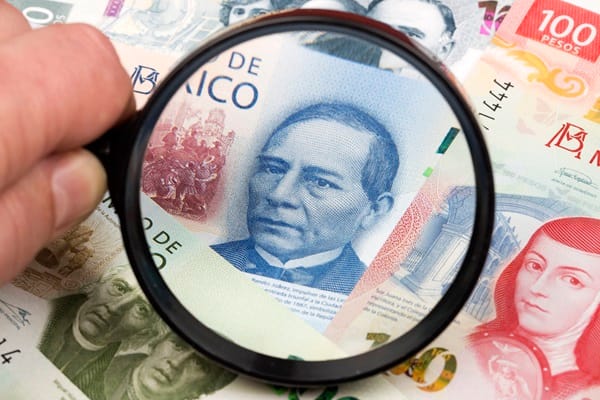The Mexican peso faces its third consecutive day of depreciation, falling more than 1% against the dollar and rapidly approaching the psychological level of 20 pesos per dollar.
This pressure reflects a confluence of both internal and external factors that are affecting investor confidence in the Mexican currency.
On the international front, emerging market currencies have recently been trading under pressure due to uncertainty linked to the Chinese economy.
Recent economic data from China and the absence of substantial fiscal stimuli have raised concerns in global markets. This adverse global context has exacerbated the volatility of the Mexican peso, which is often sensitive to risk perceptions in emerging markets.
Additionally, the peso has been affected by the resurgence in polls of former president Donald Trump in the United States. The improvement in his political standing has reignited concerns over potential protectionist policies that could be implemented in the event of his return to the White House.
Trump has suggested imposing tariffs exceeding 200% on vehicles imported from Mexico, a measure that could have significant repercussions for the Mexican automotive industry and the trade balance between the two countries. These statements increase uncertainty about the future of trade relations under the USMCA and generate caution among investors.
Meanwhile, the efforts of President Claudia Sheinbaum to reassure the business community seem to have had limited impact. Despite meeting with 240 business leaders from the United States and Mexico and emphasizing her commitment to respecting institutions, doubts persist regarding the policies her administration will adopt.
Historically, announcements of new investments in protocolary contexts do not always translate into effective capital flows. The example of Tesla’s “Gigafactory”, announced more than a year ago and yet to materialize, is a reminder of the structural challenges Mexico faces in attracting foreign direct investment.
The outlook is further complicated by the recent strength of the US dollar. As expectations of aggressive Federal Reserve interest rate cuts toward the end of the year moderate, the dollar has gained ground, placing additional pressure on the peso and other emerging market currencies.
Looking ahead, the upcoming GDP data from China could be an important catalyst for emerging markets. Weaker-than-expected economic performance in China could intensify risk aversion and negatively affect currencies tied to economic growth, such as the Mexican peso. In summary, the peso faces a complex environment where external factors, such as uncertainty in China and political dynamics in the United States, combine with internal concerns about the policies of the new government.”

